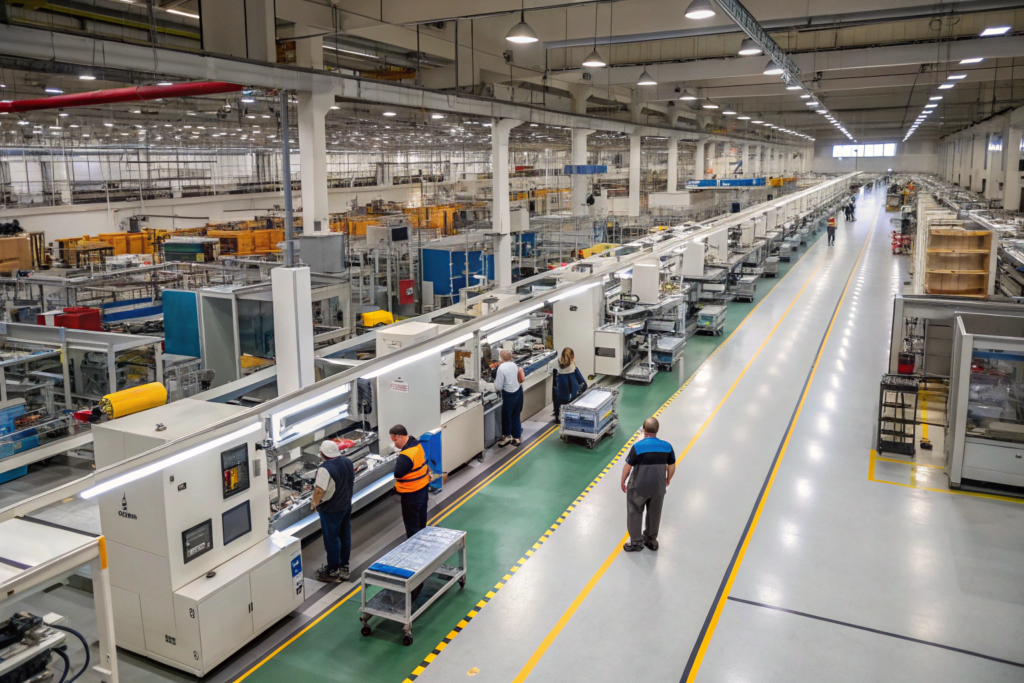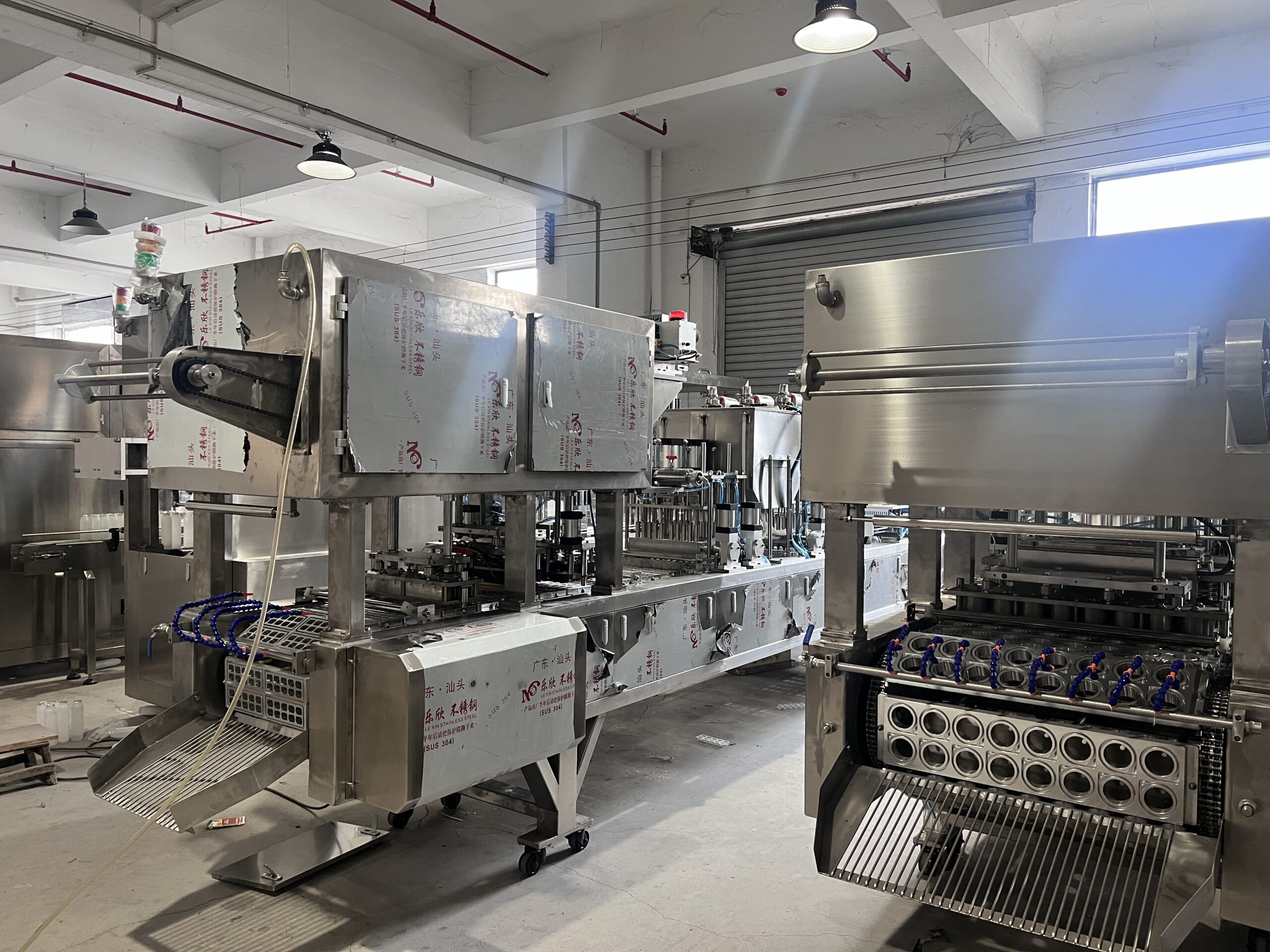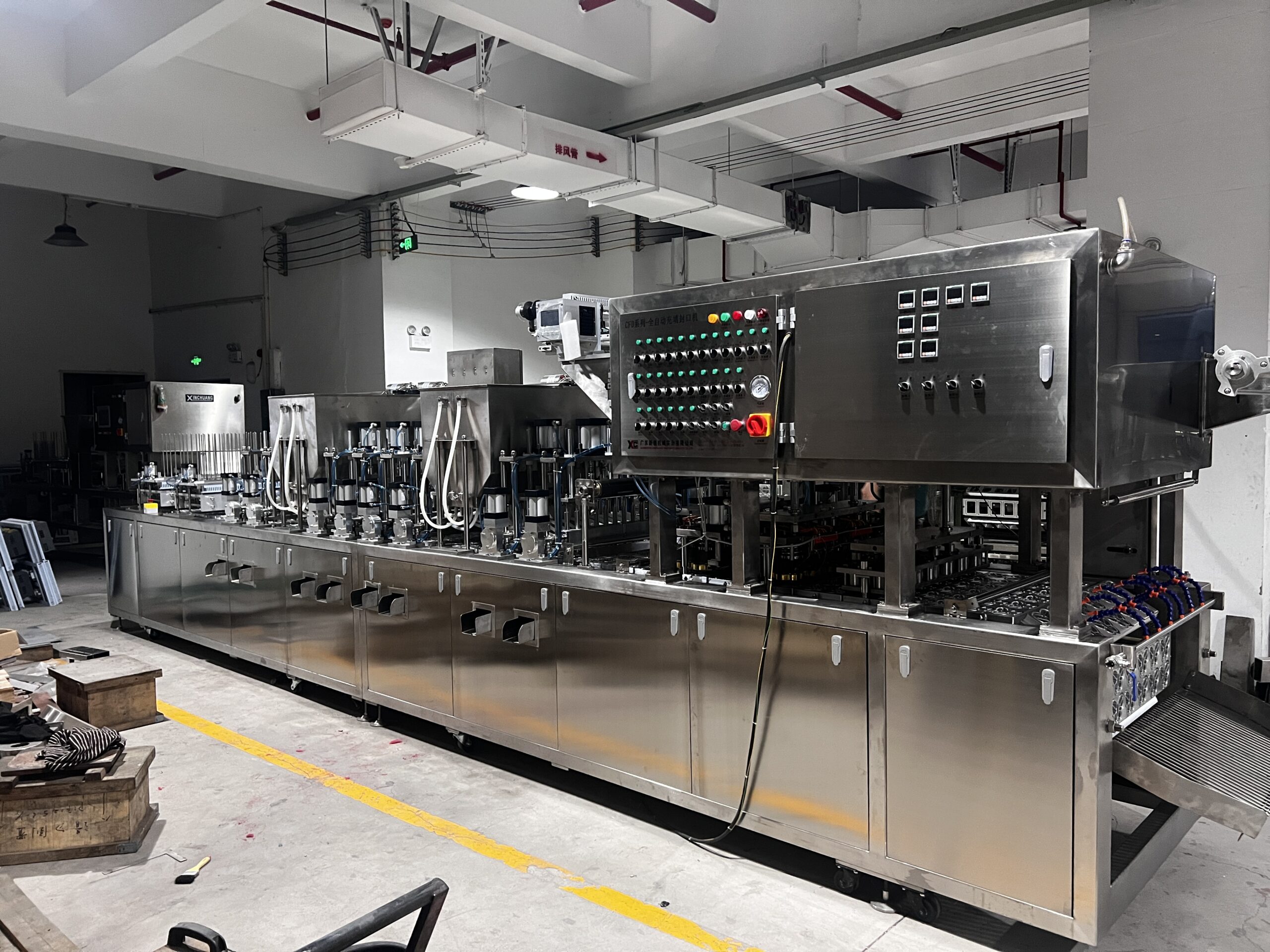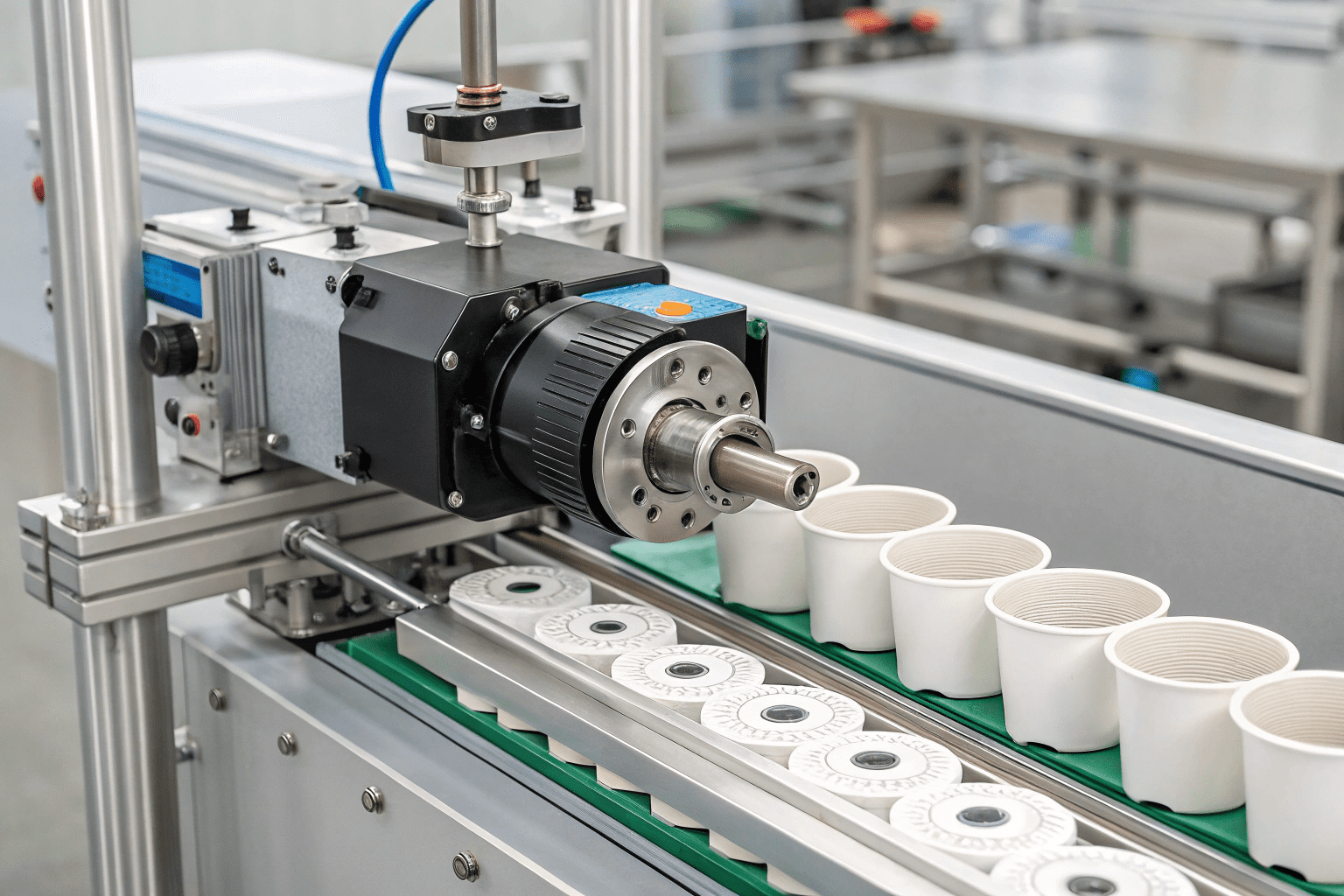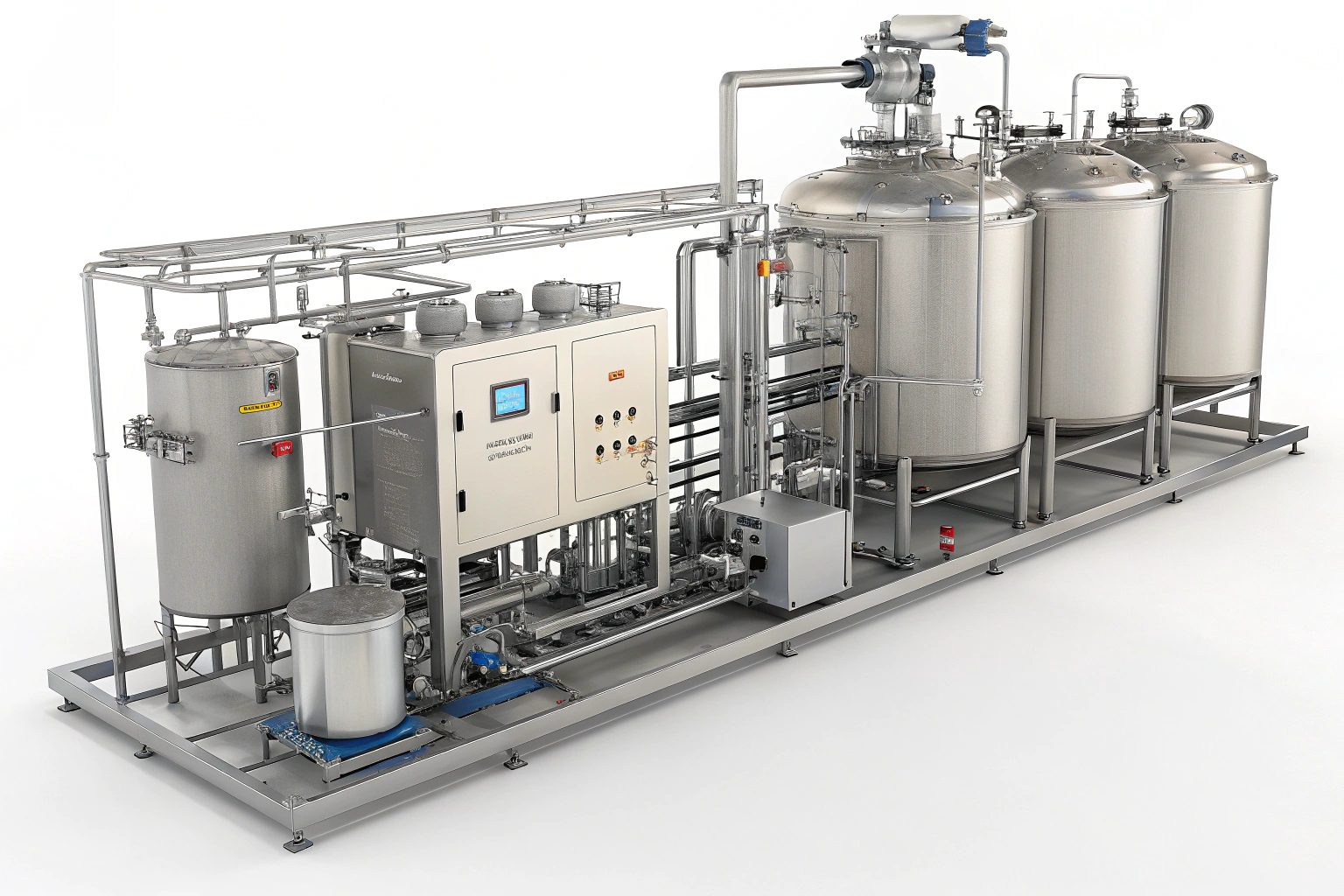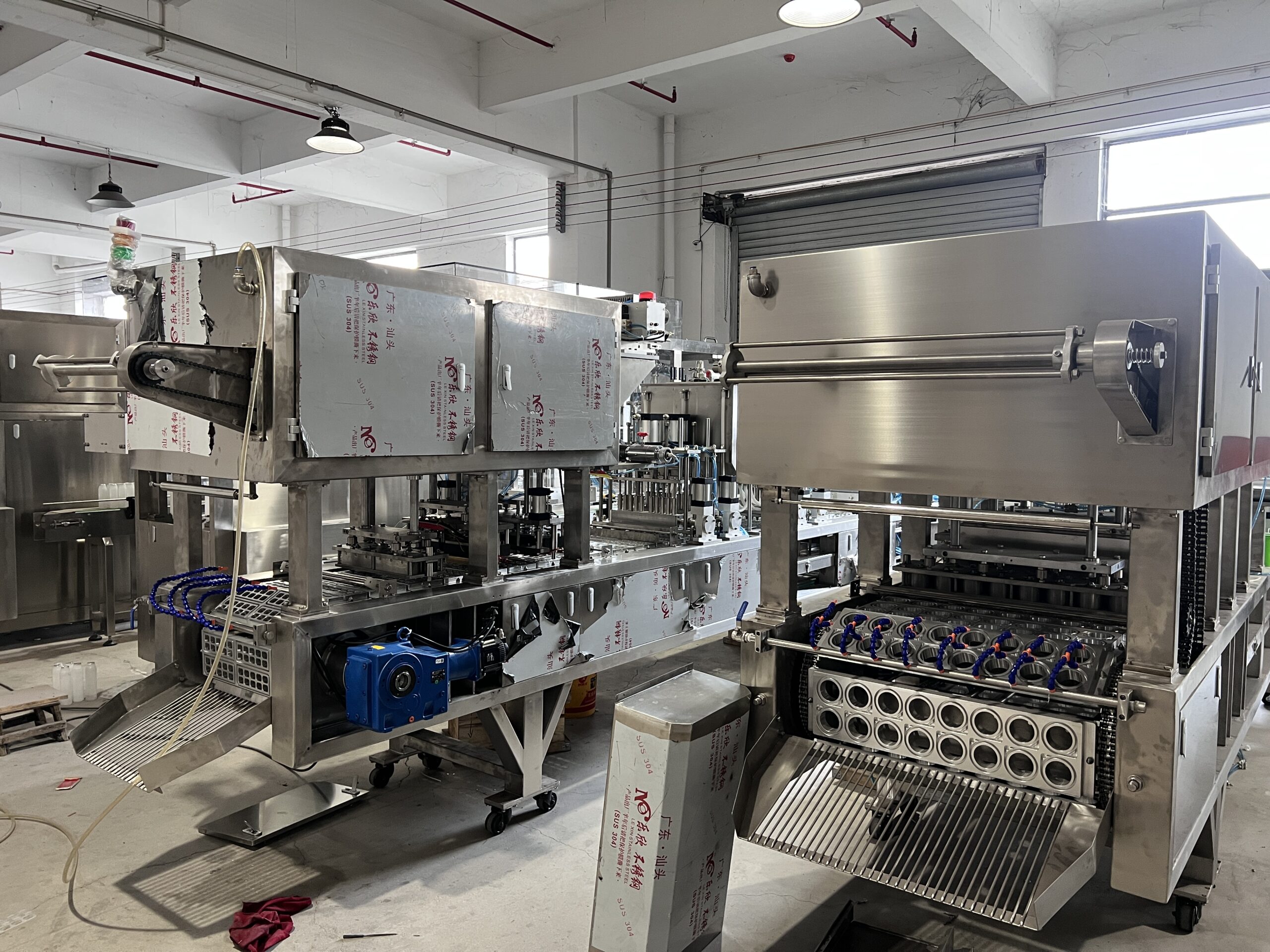How to Choose the Right Cup Filling and Sealing Machine for My Business?
Feeling overwhelmed by all the options for cup filling and sealing machines? Don’t know where to even begin your search? Worried about making the wrong choice?
The best way to choose is to focus on your needs. Your budget, product type, production volume, and desired automation level are key. Finding the perfect fit requires careful consideration of these factors.
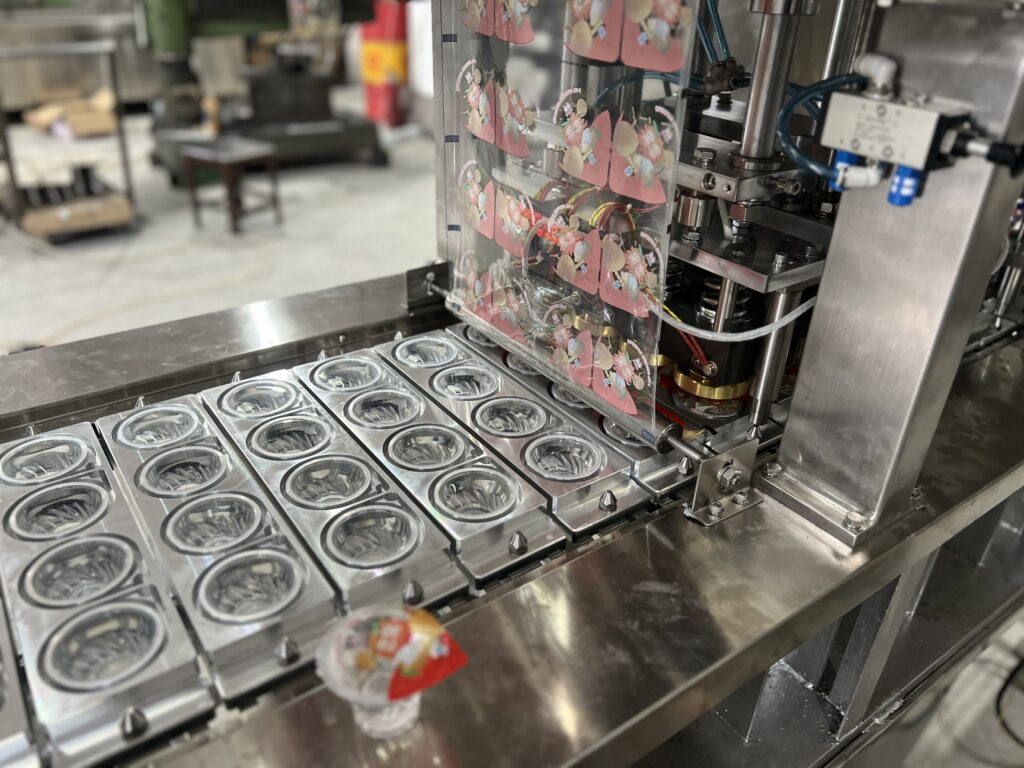
It’s a big decision, but let’s break it down into manageable steps. We’ll go through each important factor, one by one. Then, you’ll feel confident in making the right choice.
How Does My Budget Affect My Machine Choice?
Worried that your budget will limit your options too much? Thinking you might have to sacrifice quality for cost? Unsure how to balance features with affordability?
Your budget is a starting point, not a roadblock. While larger budgets allow for more automation and higher speeds, even smaller budgets can find reliable, efficient solutions. Machines are available at various price points.
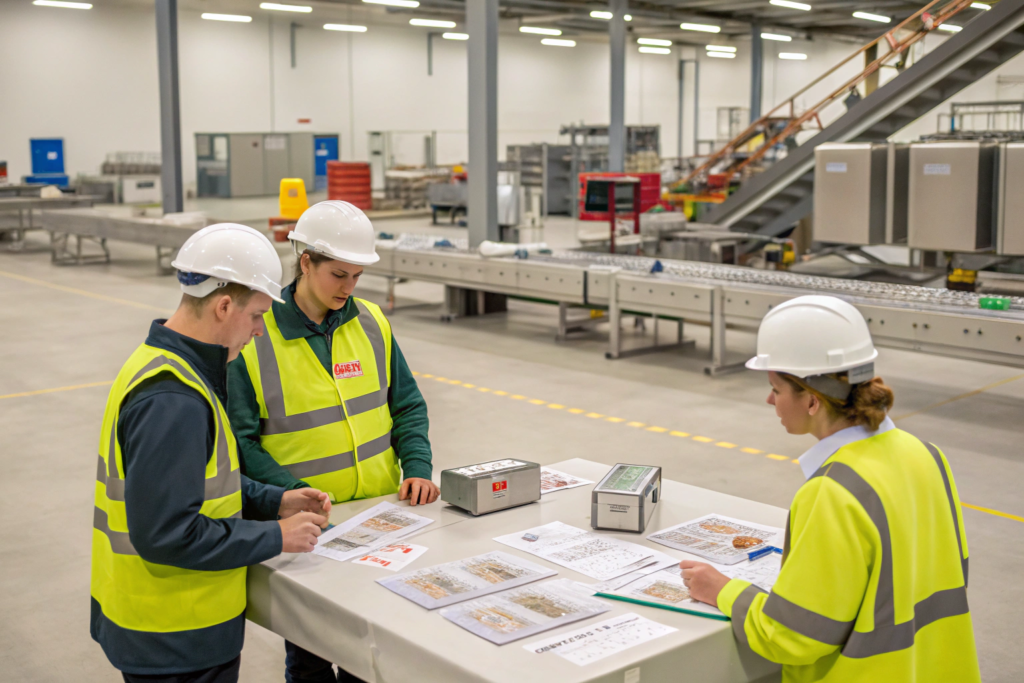
It might seem restrictive. But knowing your budget helps narrow the field. Think of it as focusing your search. Here’s how different budget levels translate to machine features:
Budget Tiers and Machine Features
-
Entry-Level (Lower Budget):
- Semi-Automatic Machines: These require more manual operation. For example, manually placing cups or lids.
- Lower Production Speed: Suitable for smaller businesses with lower output needs.
- Simpler Filling Mechanisms: May be limited to specific product types (e.g., only liquids).
- Example: A small bakery starting to package its yogurt might choose this.
-
Mid-Range (Moderate Budget):
- Partial Automation: Some automated functions, like filling. But still may need manual loading/unloading.
- Increased Production Speed: Can handle a larger volume of product per hour.
- More Versatility: Might handle both liquids and semi-viscous products (like thicker sauces).
- Example: A growing juice company expanding its product line.
-
High-End (Larger Budget):
- Fully Automated Systems: Minimal human intervention. From cup dispensing to sealing and even packing.
- Highest Production Speed: Designed for large-scale operations with very high output.
- Maximum Flexibility: Can handle a wide range of products, cup sizes, and sealing materials.
- Example: A large food manufacturer producing various pre-packaged snacks.
Beyond the Initial Price Tag
| Factor | Description |
|---|---|
| Long-Term Costs | Consider maintenance, energy consumption, and potential repair costs. A cheaper machine might cost more in the long run. |
| Return on Investment | A more expensive, automated machine might pay for itself faster due to increased production and reduced labor costs. |
| Financing Options | Some companies offer financing to make a larger investment more manageable. |
It’s not just about the upfront cost. Think about the value over time. A slightly more expensive machine might be more efficient and profitable in the long run.
How Does My Product Type Determine the Filling Mechanism?
Confused about which filling mechanism is right for your specific product? Worried about damaging your product during the filling process? Unsure how viscosity affects the choice?
Your product’s consistency is crucial. Liquids, pastes, granules, and powders each require different filling mechanisms to ensure accuracy and prevent damage. Machines are customized to match your product’s unique needs.
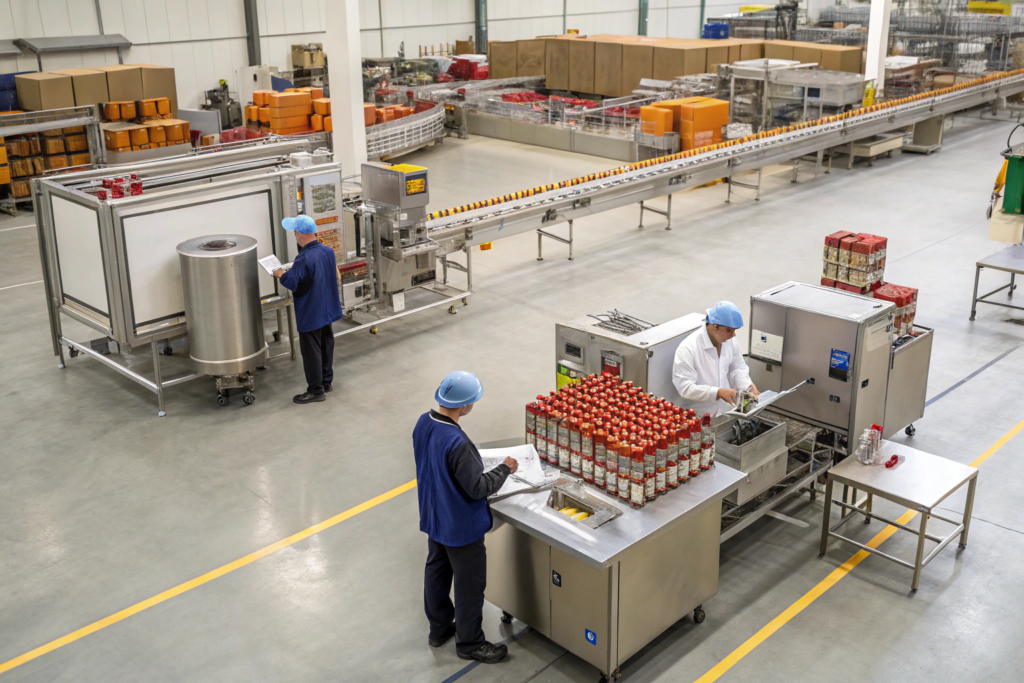
It might seem technical. But understanding this is key to preserving quality. Think of it like using the right tool for the job. Here’s a breakdown:
Matching Filling Mechanisms to Product Types
-
Liquids (Juice, Milk, Water):
- Gravity Fillers: Use gravity to dispense the liquid. Simple and cost-effective.
- Piston Fillers: Use a piston to draw in and push out a precise amount of liquid. More accurate for higher-value products.
- Overflow Fillers: Fill to a specific level in the container, ensuring consistent fill heights.
-
Pastes (Yogurt, Sauces, Creams):
- Piston Fillers (for Pastes): Designed with stronger pumps to handle thicker consistencies.
- Rotary Pump Fillers: Use rotating pumps to move the product smoothly and accurately.
-
Granules (Jelly, Chocolate Beans):
- Volumetric Fillers: Measure the product by volume. Simple and reliable for consistent granules.
- Auger Fillers: Use a rotating screw (auger) to dispense the product. Good for products that might clump.
-
Powder (Milk Powder, Spices):
- Auger Fillers: Use a rotating screw (auger) to dispense the product. Good for products that are not free-flowing.
Beyond the Basics: Product-Specific Considerations
| Factor | Description |
|---|---|
| Viscosity1 | How thick or thin your product is. This greatly affects the choice of filling mechanism. |
| Particulates2 | Does your product contain solid pieces (like fruit in yogurt)? This requires special handling. |
| Temperature3 | Some products need to be filled at specific temperatures (hot or cold). |
| Aeration | Some product may need to avoid air. |
It’s not just about "liquid" or "paste." We need to consider all the properties of your product. This ensures the filling process is gentle, accurate, and maintains quality.
How to choose the machine according to the production volume?
Feeling pressured to meet growing demand? Do you worry about the wastage due to inaccurate filling? Stressed about keeping up with orders using manual processes?
The production volume is how much product you need to fill and seal per hour or day. Matching this to your machine’s capacity is essential for efficiency. Calculating the ideal production speed are important.
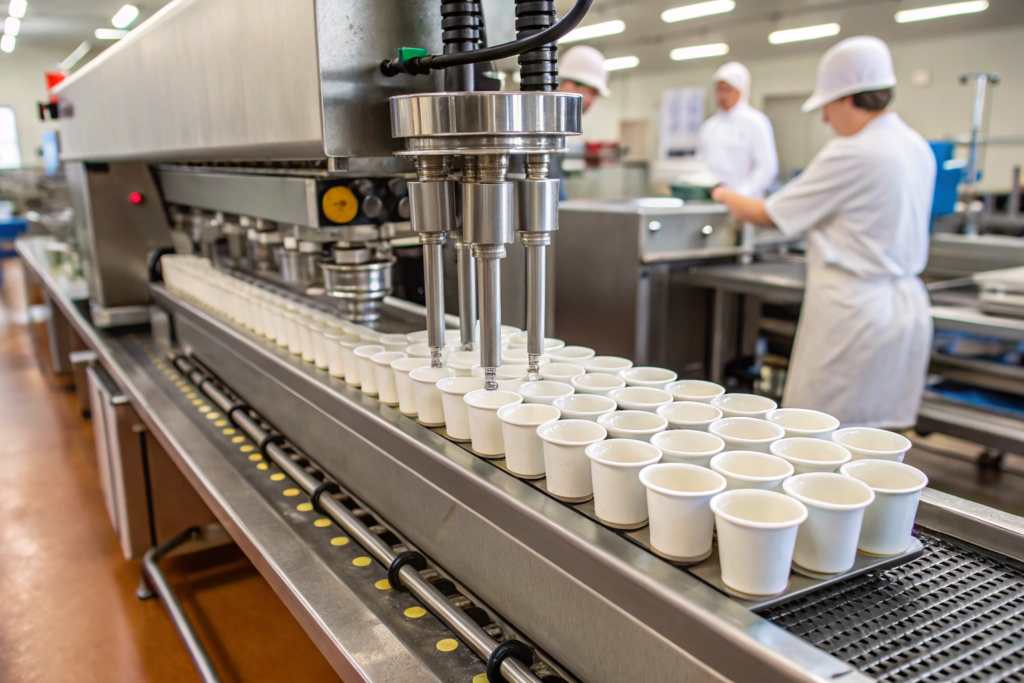
It might seem like a simple number. But it has a big impact on your operations. Think of it as the engine driving your production line. Here’s how to approach it:
Calculating Your Required Production Volume
- Current Demand: How many cups do you currently sell per day or week? Be realistic.
- Projected Growth: How much do you expect sales to increase in the next year? Three years? Five years?
- Peak Seasons: Do you have periods of significantly higher demand (e.g., summer for ice cream)?
- Downtime: Factor in time for machine maintenance, cleaning, and potential repairs.
Matching Volume to Machine Capacity
| Production Volume (Cups/Hour) | Machine Type Recommendation |
|---|---|
| Less than 2,000 | Semi-automatic or small-scale automatic |
| 2,000 – 10,000 | Mid-range automatic |
| 10,000 – 70,000+ | High-speed, fully automated system |
| Custom Required | Some machine can reach customer required |
Important Note: These are general guidelines. Machine can always customize to your specific needs.
Beyond the Numbers: Efficiency and Scalability
It’s not just about hitting a number. Think about:
- Minimizing Waste: An accurate filling machine reduces product loss due to overfilling or spills.
- Labor Costs: Higher automation reduces the need for manual labor, saving you money.
- Future-Proofing: Choose a machine that can handle anticipated growth, not just your current needs.
It’s about finding the right balance. Enough capacity to meet demand without overspending on a machine that’s too large for your operation.
How Does the Level of Automation Impact My Decision?
Confused about the differences between semi-automatic, automatic, and fully automated systems? Not sure which level is right for your workforce and budget?
The level of automation determines how much manual labor is involved. This affects your labor costs, production speed, and overall efficiency. There are all levels, from basic to fully integrated systems.
%[Level of Automation](
"Level of Automation")
It might seem like a simple choice – more automation is better, right? But, it depends on your needs. Let’s break down the different automation levels:
Understanding Automation Levels
-
- Operator Involvement: Requires significant manual input. This includes:
- Placing cups/containers
- Starting the filling cycle
- Applying lids (sometimes)
- Removing filled containers
- Best For: Smaller businesses, startups, or those with limited budgets.
- Operator Involvement: Requires significant manual input. This includes:
-
- Operator Involvement: Automates key parts of the process, typically:
- Filling
- Sealing
- Still Requires: Manual loading and unloading of containers.
- Best For: Medium-sized businesses with growing production needs.
- Operator Involvement: Automates key parts of the process, typically:
-
- Operator Involvement: Minimal human intervention. The entire process, from start to finish, is automated:
- Cup dispensing
- Filling
- Sealing
- Discharge
- Often includes:
- Date coding
- Checkweighing
- Integration with other packaging equipment (like cartoners)
- Best For: Large-scale operations with high volume and a need for maximum efficiency.
- Operator Involvement: Minimal human intervention. The entire process, from start to finish, is automated:
Automation and Your Business
| Factor | Semi-Automatic | Automatic | Fully Automated |
|---|---|---|---|
| Labor Costs | Highest | Moderate | Lowest |
| Production Speed | Lowest | Medium | Highest |
| Initial Investment | Lowest | Medium | Highest |
| Skill Level Required | Lower (basic machine operation) | Moderate (some technical understanding) | Higher (programming, maintenance) |
| Space Requirements | Smaller footprint | Moderate footprint | Largest footprint (may require significant space) |
It’s a trade-off. More automation means higher upfront costs but lower long-term labor costs. It’s about finding the right balance for your specific situation.
How do Cup Size and Film Compatibility Matter?
Thinking all machines can handle any cup size? Worried about finding the right sealing film for your chosen machine? Confused about the different film materials available?
Cup size and film compatibility are critical for a perfect seal. Machines are customized to your exact cup dimensions. And Machines work with the appropriate film materials for your product.
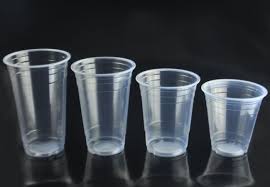
It might seem like a detail. But, these factors directly impact the quality of your packaging. Think of it like matching a lid to a container – it has to fit perfectly.
Cup Size Customization
- Providing Samples: You can provide samples of your cups.
- Precise Adjustments: Machine’s components can be customized. This includes:
- Cup holders
- Filling nozzles
- Sealing heads
- Any Shape, Any Size: Machine can accommodate round, square, or custom-shaped cups.
Film Compatibility: Ensuring the Perfect Seal
-
Different Film Materials:
- PP (Polypropylene): Common, versatile, and cost-effective.
- PE (Polyethylene): Good for moisture resistance.
- PET (Polyethylene Terephthalate7): Offers excellent clarity and strength.
- Aluminum Foil: Provides a complete barrier against light, oxygen, and moisture.
- Paper film Offer a eco-friendly choice8.
-
Matching Film to Product:
- Liquids: Often use PE or PET films.
- High-Acid Products (like some juices): May require a special barrier film.
- Products Requiring Long Shelf Life: Often use aluminum foil9 or multi-layer films.
-
Sealing Temperature: Different films require different sealing temperatures. Machine need to be adjusted accordingly.
Beyond Functionality: Aesthetics and Branding
| Factor | Description |
|---|---|
| Printability | Some films are better for printing high-quality graphics and branding. |
| Clarity | Clear films showcase your product. |
| Texture | Some films have a matte or glossy finish, affecting the overall look and feel of the packaging. |
It’s not just about sealing the cup. It’s about creating a package that is secure, functional, and visually appealing.
How Much Space Do I Need for the Machine (Footprint)?
Worried that you don’t have enough space for a filling and sealing machine? Thinking you might need to move to a larger facility? Unsure how to plan your layout?
The machine’s footprint – the amount of floor space it occupies – is an important practical consideration. Providing detailed specifications for each machine are helpful.
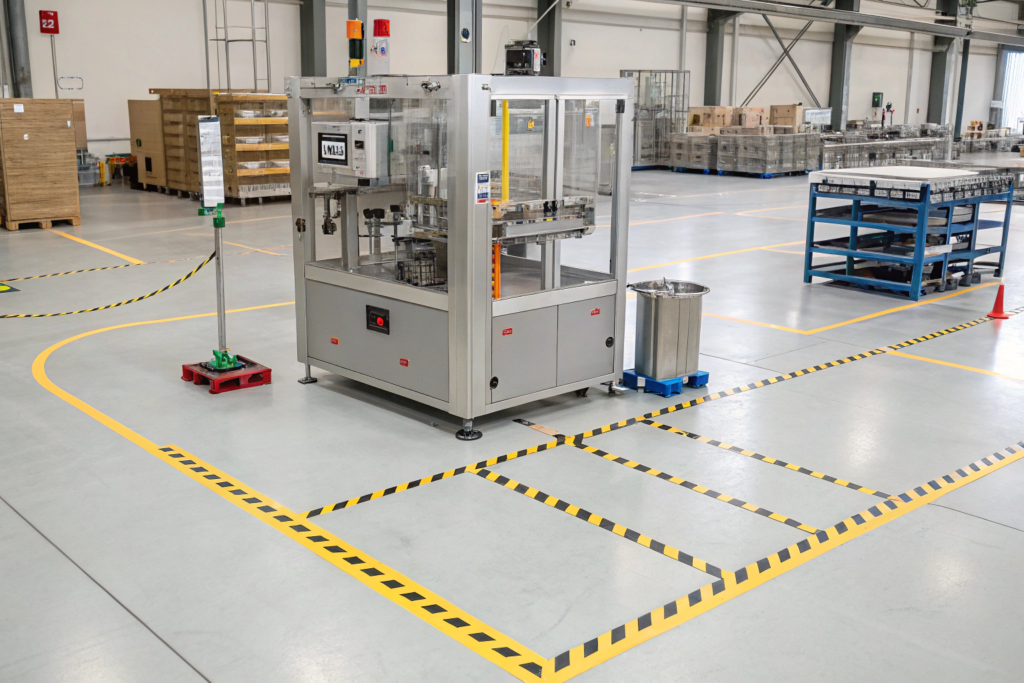
It seems obvious. But, it’s often overlooked until the last minute. Planning for space before you order is crucial.
Factors Affecting Machine Footprint
- Automation Level:
- Semi-automatic machines generally have the smallest footprint.
- Fully automated systems, with conveyors and additional components, require the most space.
- Production Capacity: Higher-capacity machines are often larger.
- Additional Features: Options like date coders or checkweighers add to the overall size.
Planning Your Layout
- Measure Your Available Space: Be precise. Include doorways, columns, and any other obstructions.
- Allow for Workflow: Consider the movement of:
- Empty cups
- Filling materials
- Finished products
- Operators
- Maintenance personnel
- Safety Clearances: Ensure enough space around the machine for safe operation and maintenance.
- Future Expansion: If you anticipate growth, plan for potentially larger equipment in the future.
It’s not just about fitting the machine in. It’s about creating a workspace that is efficient, safe, and allows for smooth operation.
Conclusion
Choosing the right cup filling and sealing machine involves many factors. Budget, product type, volume, automation, cup size, film, and space all matter. Don’t be overwhelmed! Taking the process step-by-step, and get expert guidance when needed, can make all the difference.
-
Understanding viscosity is crucial for selecting the right filling mechanism, ensuring product quality and efficiency. ↩
-
Learn how solid pieces in products can impact filling techniques and ensure proper handling for quality assurance. ↩
-
Temperature can significantly influence product consistency and filling accuracy, making it essential to understand. ↩
-
Explore the benefits of Semi-Automatic systems to understand how they can optimize operations for smaller businesses. ↩
-
Learn about the features of Automatic systems to see how they can meet the needs of medium-sized businesses effectively. ↩
-
Discover how Fully Automated systems can enhance efficiency and reduce labor costs in high-volume production environments. ↩
-
Explore the advantages of PET in packaging, including its clarity and strength, to understand its role in product preservation. ↩
-
Discover the importance of eco-friendly packaging options and their impact on sustainability and consumer choices. ↩
-
Learn how aluminum foil acts as a barrier against light, oxygen, and moisture, ensuring food freshness and safety. ↩

